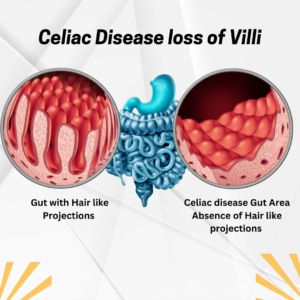About gluten:
Gluten is one of the protein available in various grains like wheat, barely and rye. Gluten is one of the proteins. This protein is contains of gliadin and glutenin. These are also proteins. In many countries wheat primary source of food. Barely, wheat and rye are widely available food items. Even some people generally looking for gluten free food items and nutraceuticals items. We will discuss on gluten importance and gluten function. Let’s deep dive in the matter.https://pubmed.ncbi.nlm.nih.gov/28244676/

Know about Gluten:
Gluten is very important source of dietary item. This is also a protein and combination of two more proteins of glutenin and gliadins. This item is very crucial for the functioning benefits of the body. Gluten is source from wheat, barely and rye. In many countries wheat is primary source of food item. Gluten is main ingredient in grains. Even gluten-free food items are also available. The Rye, barley and wheat, the availability of the gluten protein quality and difference based on availability of glutenin and gliadin. All kinds of wheat have not same with same proportion of glutenin ad gliadins.
The science behind Gluten:
The two kinds of proteins gliadins and glutenin. Need to understand about both proteins and their chemical structure and physical properties. The difference between both proteins lot many differences. While preparing food items based on their protein changes the preferences and usage. Availability of the proteins of gliadins and glutenin changes in food structure and texture. Let’s discuss on both separately.
Glutenin:
Wheat and related grains having glutenin, glutenin is one of the proteins. The functional benefit of the gluten is making the perfect structure of the item. When added with water it mixes perfectly, formation of dough. It also provides good elasticity, Strong dough. Food preparations with wheat and glutenin contained other grains items makes good volume. These have two types based on the molecular weight of glutenin. One is HMW and the other is LMW. The High molecular weight glutenin which provides good quality of the flour-based food item. And even it gives the good quality, elasticity and viscosity of the dough. 1
Gliadin:
Another protein gliadin found in gluten. This contains more in proline and glutamine amino acids. Because of this reason gliadins called as prolamin protein. Gliadin which makes the more elastic and viscus of dough. This property helps in bakery items which made by wheat. Their structure is straight and polypeptide chains unlike glutenin they will not maintain cross link bonding in chemical structure. Molecules arranged weekly in their gliadin chemical molecule. Because of this reason they will have elasticity in property. They are in four subtype alpha, beta, gamma and omega.2
Gliadins and Glutenin have the key functional differences between them. Gliadins provides viscous this helps to make bakery items and easy to eat. Another use of gliadins is its helps to make dough when added with water. Another one Glutenin is also need for make elasticity of the dough and makes strength of the dough.https://www.sciencedirect.com/science/article/abs/pii/S0733521023001273
Gluten Tolerance
Celiac disease is autoimmune disease. In this condition immunity will react with gluten. Already we know that gluten we found in wheat, barley items, in celiac disease patients’ gluten worsen the small intestine lining and cause malabsorption. Celiac disease has not available perfect treatment. Only option is dietary management of glut food. These patients need gluten free dietary requirements. https://pmc.ncbi.nlm.nih.gov/articles/PMC5866307/#:~:text=Emerging%20evidence%20shows%20that%20gluten,encountered%20with%20irritable%20bowel%20syndrome.
Non-Celiac Disease
Non-Celiac gluten sensitivity or tolerance is a condition that here we cannot have diagnosis of celiac disease but still we have experiences of the celiac disease related symptoms. For this NCGS condition we don’t have treatment option. Only we have dietary restrictions. Diet options like the celiac disease only. Furthermore, research is required for this to improve the quality of life. https://pubmed.ncbi.nlm.nih.gov/34073654/
References:
- Jessica R Biesiekierski, What is gluten?, J Gastroenterol Hepatol, 2017 Mar:32 Suppl 1:78-81, doi: 10.1111/jgh.13703, PMID: 28244676, DOI: 1111/jgh.13703
- Faqir Muhammad Anjum, Moazzam Rafiq Khan, Wheat gluten: high molecular weight glutenin subunits–structure, genetics, and relation to dough elasticity, J Food Sci, 2007 Apr;72(3):R56-63, doi: 10.1111/j.1750-3841.2007.00292.x.
- Sunao Shimada1, Tetsuya Tanigawa, Involvement of gliadin, a component of wheat gluten, in increased intestinal permeability leading to non-steroidal anti-inflammatory drug-induced small-intestinal damage, PLoS One, 2019 Feb 20;14(2):e0211436, doi: 10.1371/journal.pone.0211436. eCollection 2019.
- Xiuzhi Luo, Hui Yu, Determination of extensibility and toughness of wheat-flour dough based on bubbles blown by sheeted dough and airflow-3D imaging technique, Volume 113, September 2023, 103754, https://doi.org/10.1016/j.jcs.2023.103754
- Benjamin Niland 1,2, Brooks D Cash, Health Benefits and Adverse Effects of a Gluten-Free Diet in Non–Celiac Disease Patients, Gastroenterol Hepatol (N Y), PMCID: PMC5866307 PMID: 29606920, 2018 Feb;14(2):82–91.
- Feliznando Isidro Cárdenas-Torres1, Francisco Cabrera-Chávez, Non-Celiac Gluten Sensitivity: An Update, Medicina (Kaunas), 2021 May 24;57(6):526, doi: 10.3390/medicina57060526.
